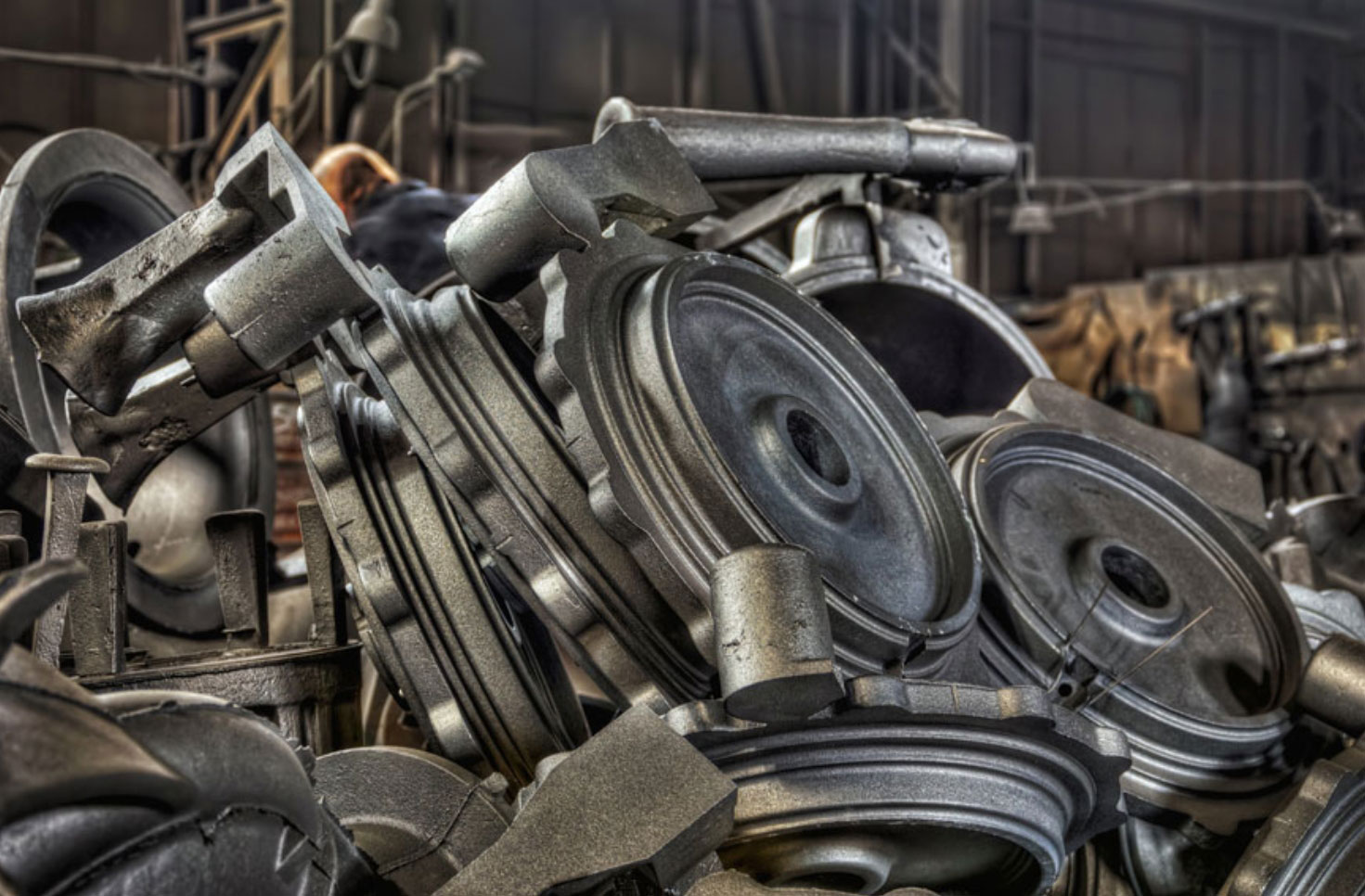Bimetallic composite components—such as rolls, seamless pipes, and rings—serve as critical structural elements in nuclear power, petrochemical, and heavy machinery sectors, providing essential load-bearing, connection, and transmission functions. Traditional single-material components increasingly fail to meet extreme service demands, necessitating the integration of dual metals to combine wear/corrosion resistance with high strength/toughness. Centrifugal casting emerges as a pivotal manufacturing method, leveraging centrifugal force to achieve metallurgical bonding at the interface. This technology enables the production of components with layered functionality—outer layers optimized for hardness or strength, and inner layers engineered for abrasion or chemical resistance—while minimizing material waste through near-net-shape forming. The core challenge lies in controlling the interfacial morphology, elemental diffusion, and defect formation during the casting process.
1. Centrifugal Casting Fundamentals
Centrifugal casting involves pouring molten metal into a rotating mold, where centrifugal force ($F_c$) distributes the liquid uniformly along the mold wall. The centrifugal acceleration ($a_c$) is governed by:
$$a_c = \omega^2 r = \left( \frac{2\pi N}{60} \right)^2 r$$
where $\omega$ is angular velocity (rad/s), $r$ is mold radius (m), and $N$ is rotational speed (rpm). This force density gradient drives segregation-free solidification for dense, defect-resistant structures. Two configurations dominate:
- Horizontal Centrifugal Casting: Mold rotates horizontally, ideal for elongated components like pipes.
- Vertical Centrifugal Casting: Mold rotates vertically, suited for disk-shaped rings with smaller height-to-diameter ratios.

Key advantages over static casting include enhanced feeding efficiency, reduced shrinkage porosity, and refined grain structures due to forced convection. However, parameter optimization—particularly rotational speed, pouring temperature, and inter-layer timing—is critical to suppress macro-segregation.
2. Bimetallic Roll Manufacturing: Process and Interface Control
Composite rolls typically feature a centrifugally cast outer layer (e.g., high-chromium iron for hardness) and a gravity-poured inner core (e.g., ductile iron for toughness). The casting process requires stringent control to ensure interfacial integrity.
2.1. Process Parameters and Defect Mitigation
Optimal parameters derived from empirical and simulation studies (e.g., ProCAST) are summarized below:
| Parameter | Optimal Range | Impact on Quality |
|---|---|---|
| Outer Layer Pouring Temp. | 1,300–1,320°C | ↑ Temp. promotes diffusion but risks element mixing; ↓ Δt causes interfacial turbulence |
| Inner Layer Pouring Temp. | 1,280–1,300°C | |
| Inter-layer Interval (Δt) | 6.5 min | |
| Mold Speed | 640 rpm | ↑ Speed reduces inclusions but ↑ cracking risk |
The interval Δt must satisfy:
$$0.7t_{s1} \leq \Delta t \leq t_{s2} + 6$$
where $t_{s1}$ and $t_{s2}$ are solidification times (min) for outer/inner layers. Premature inner pouring causes alloy mixing, while delays hinder diffusion bonding.
2.2. Interfacial Morphology and Bonding Mechanisms
The interface comprises four microstructural zones: unmelted outer layer, semi-molten zone, molten diffusion zone, and inner core. Elemental interdiffusion—primarily C and Cr—dictates bonding strength. Diffusion layer thickness ($\delta$) correlates with temperature gradients:
$$\delta \propto \sqrt{D \cdot t}$$
where $D$ is diffusion coefficient (m²/s) and $t$ is interaction time (s). Process modifications significantly enhance homogeneity:
- Electromagnetic Stirring: Refines grains, reduces microsegregation of W/Mo/V.
- RE-Mg-Ti Modification: Degenerates eutectic carbides in high-speed steel layers.
Ultrasonic testing identifies interfacial defects (Figure 1 waveforms), with “D-shaped echoes” indicating delamination risks.
3. Bimetallic Pipe Production: Challenges and Solutions
Pipes manufactured via horizontal centrifugal casting require inner surfaces resistant to wear/corrosion (e.g., high-Cr iron) and outer layers with high toughness (e.g., carbon steel). The casting process involves sequential pouring into a rotating mold.
3.1. Critical Process Metrics
Key parameters influencing pipe integrity include:
| Variable | Effect | Optimization Strategy |
|---|---|---|
| Mold Speed | ↑: Reduces inner surface roughness ↓: Causes “rainfall” defects |
950–1,050 rpm |
| Outer Layer Temp. | ↑: Enhances diffusion | 1,480–1,520°C |
| Inter-layer Δt | >9 s for stable transition layer | Modeled via thermal simulation |
Transition layer stability follows:
$$T_s = \frac{T_{\text{outer}} + T_{\text{inner}}}{2}$$
where $T_s$ is solidus temperature, and $T_{\text{outer}}$, $T_{\text{inner}}$ are surface temperatures before bonding.
3.2. Performance Enhancement Techniques
Alloying and heat treatment dramatically improve pipe properties:
- Boron-Based Fluxes: Expand transition layer width by 40% and enable mechanical interlocking.
- Quenching-Tempering: For 304 stainless steel/high-Cr iron pipes, post-casting heat treatment (980°C quenching + 260°C tempering) maximizes hardness (64.7 HRC) and shear strength (500 MPa).
Mechanical performance of centrifugally cast bimetallic pipes:
| Material Pair | Hardness (HRC) | Shear Strength (MPa) | Impact Toughness (J/cm²) |
|---|---|---|---|
| High-Cr Iron / Carbon Steel | 55–65 | 220–240 | 5.7–6.8 |
| 304 Stainless / High-Cr Iron | 58–64 | 480–520 | 190–210 |
4. Emerging Applications: Bimetallic Rings
Vertical centrifugal casting enables short-flow manufacturing of ring-shaped components (e.g., bearing races). The casting process integrates dissimilar metals (e.g., stainless steel/low-carbon steel) into near-net-shape preforms for subsequent ring rolling. Key innovations include:
- Interface Flux Design: Low-density fluxes prevent oxidation while enhancing wettability.
- Multi-Stage Heat Treatment: Eliminates residual stresses from differential thermal expansion.
Future research priorities involve modeling elemental diffusion kinetics at curved interfaces and developing AI-driven parameter optimization for the casting process.
5. Conclusion
Centrifugal casting is a robust method for manufacturing high-performance bimetallic components. Success hinges on precise control over rotational dynamics, thermal gradients, and interfacial reactions. Electromagnetic fields, alloy modification, and targeted heat treatments significantly enhance bonding quality. Future advancements will focus on expanding material compatibility (e.g., Al/steel, Al/Mg systems) and integrating digital twins for real-time casting process optimization. This technology promises substantial reductions in rare-metal usage while extending component lifespans in extreme environments.
